Business Psychology Report: Occupational Psychology at Swan Cooper
VerifiedAdded on 2020/02/05
|16
|3985
|464
Report
AI Summary
This report delves into the realm of business psychology, focusing on a case study involving Swan Cooper, a company undergoing significant changes due to an acquisition. It explores major theoretical approaches in occupational psychology, such as behaviorist, cognitive, and humanistic approaches, and their relevance to managing change within the organization. The report emphasizes the usefulness of scientific methods, both qualitative and quantitative, in understanding employee behavior and assessing individual differences, including attitudes and personality traits. It examines various psychometric instruments like the Myers-Briggs Type Indicator and Likert scales. Furthermore, the report analyzes workforce reactions to change using the Kubler-Ross model and identifies specific reasons for resistance to change. The report concludes with recommendations for improving performance, addressing stakeholder concerns, and facilitating a smooth transition in the face of organizational change.
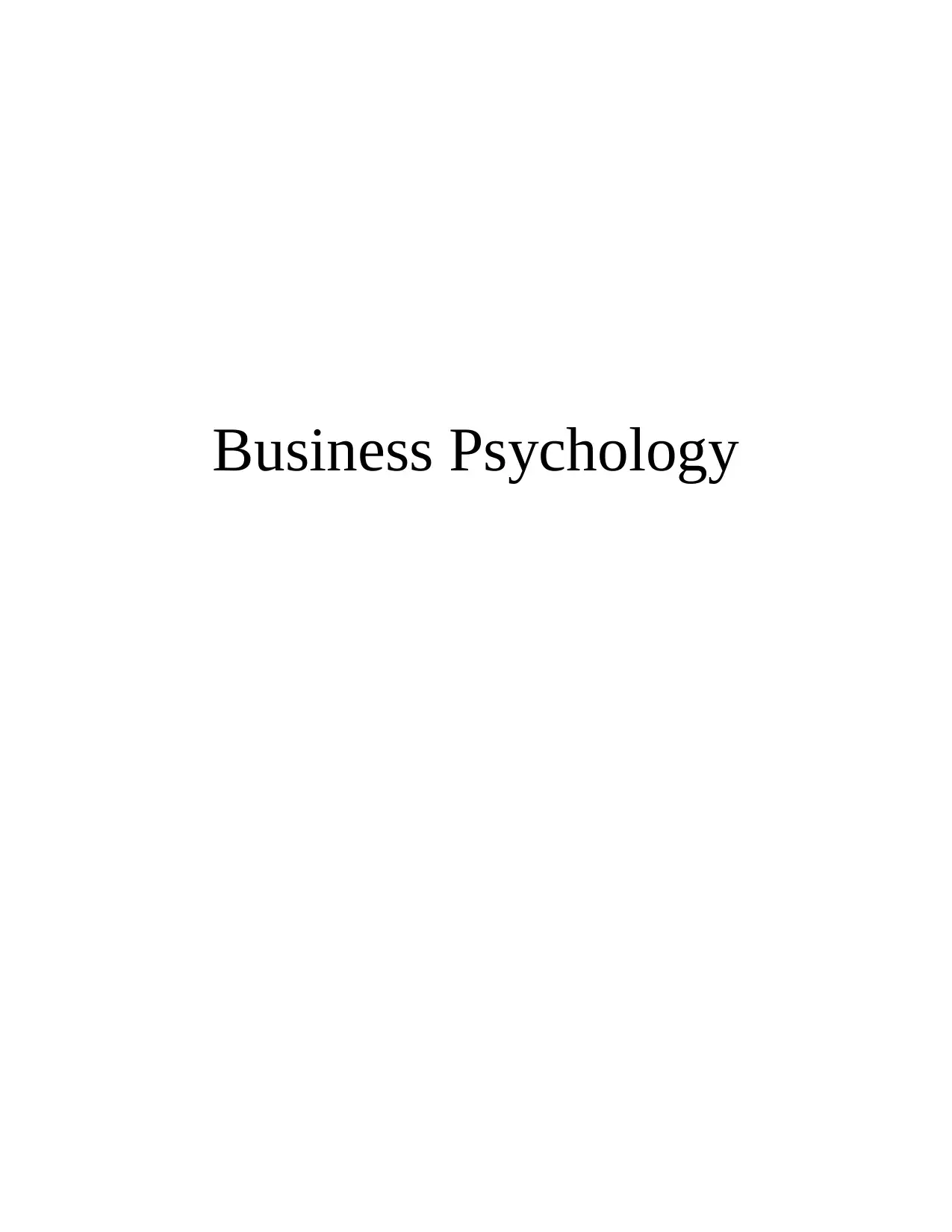
Business Psychology
Paraphrase This Document
Need a fresh take? Get an instant paraphrase of this document with our AI Paraphraser
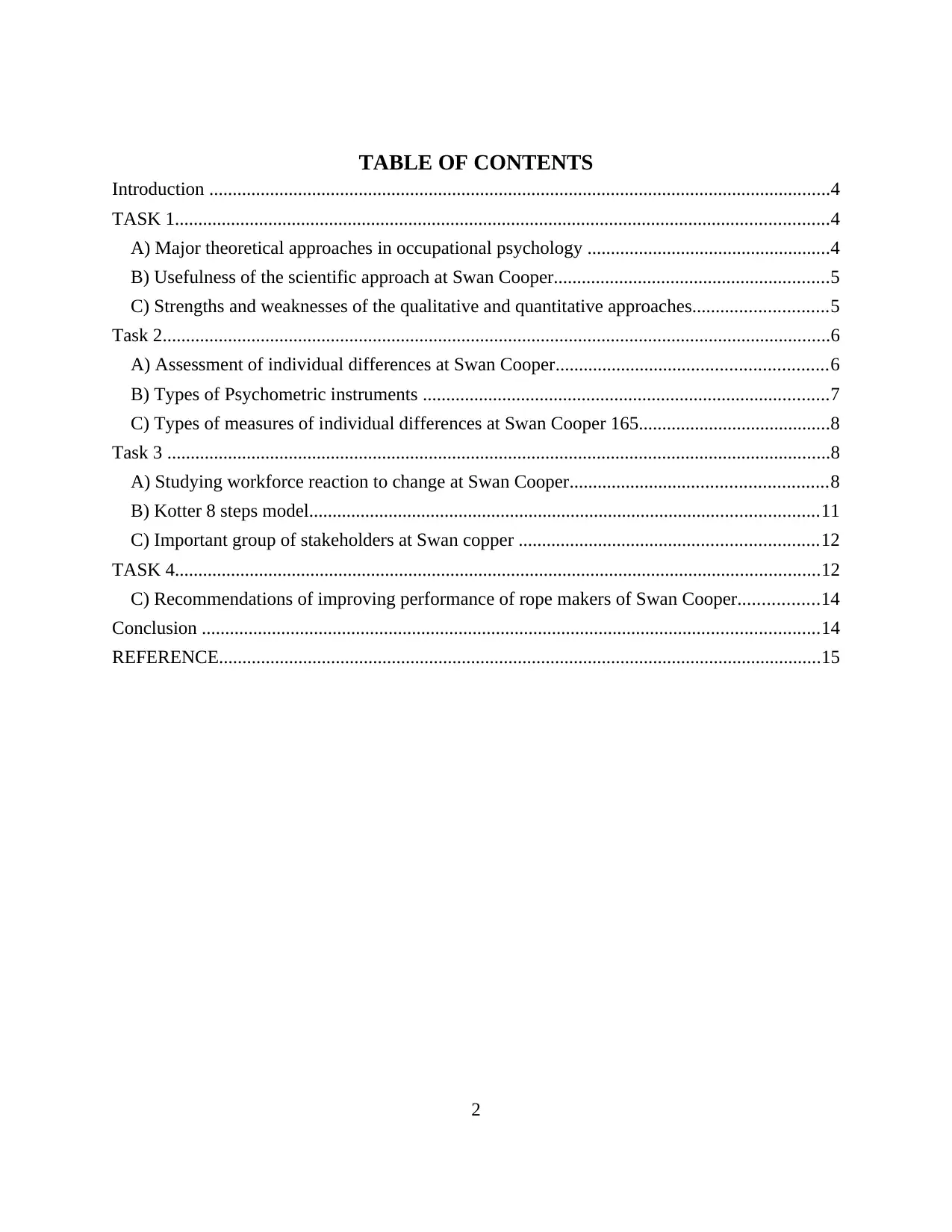
TABLE OF CONTENTS
Introduction .....................................................................................................................................4
TASK 1............................................................................................................................................4
A) Major theoretical approaches in occupational psychology ....................................................4
B) Usefulness of the scientific approach at Swan Cooper...........................................................5
C) Strengths and weaknesses of the qualitative and quantitative approaches.............................5
Task 2...............................................................................................................................................6
A) Assessment of individual differences at Swan Cooper..........................................................6
B) Types of Psychometric instruments .......................................................................................7
C) Types of measures of individual differences at Swan Cooper 165.........................................8
Task 3 ..............................................................................................................................................8
A) Studying workforce reaction to change at Swan Cooper.......................................................8
B) Kotter 8 steps model.............................................................................................................11
C) Important group of stakeholders at Swan copper ................................................................12
TASK 4..........................................................................................................................................12
C) Recommendations of improving performance of rope makers of Swan Cooper.................14
Conclusion ....................................................................................................................................14
REFERENCE.................................................................................................................................15
2
Introduction .....................................................................................................................................4
TASK 1............................................................................................................................................4
A) Major theoretical approaches in occupational psychology ....................................................4
B) Usefulness of the scientific approach at Swan Cooper...........................................................5
C) Strengths and weaknesses of the qualitative and quantitative approaches.............................5
Task 2...............................................................................................................................................6
A) Assessment of individual differences at Swan Cooper..........................................................6
B) Types of Psychometric instruments .......................................................................................7
C) Types of measures of individual differences at Swan Cooper 165.........................................8
Task 3 ..............................................................................................................................................8
A) Studying workforce reaction to change at Swan Cooper.......................................................8
B) Kotter 8 steps model.............................................................................................................11
C) Important group of stakeholders at Swan copper ................................................................12
TASK 4..........................................................................................................................................12
C) Recommendations of improving performance of rope makers of Swan Cooper.................14
Conclusion ....................................................................................................................................14
REFERENCE.................................................................................................................................15
2

Illustration Index
Illustration Index
Illustration 1: Kubler Ross Model....................................................................................................9
Illustration 2: Kotter's 8 step Model..............................................................................................11
3
Illustration Index
Illustration 1: Kubler Ross Model....................................................................................................9
Illustration 2: Kotter's 8 step Model..............................................................................................11
3
⊘ This is a preview!⊘
Do you want full access?
Subscribe today to unlock all pages.

Trusted by 1+ million students worldwide
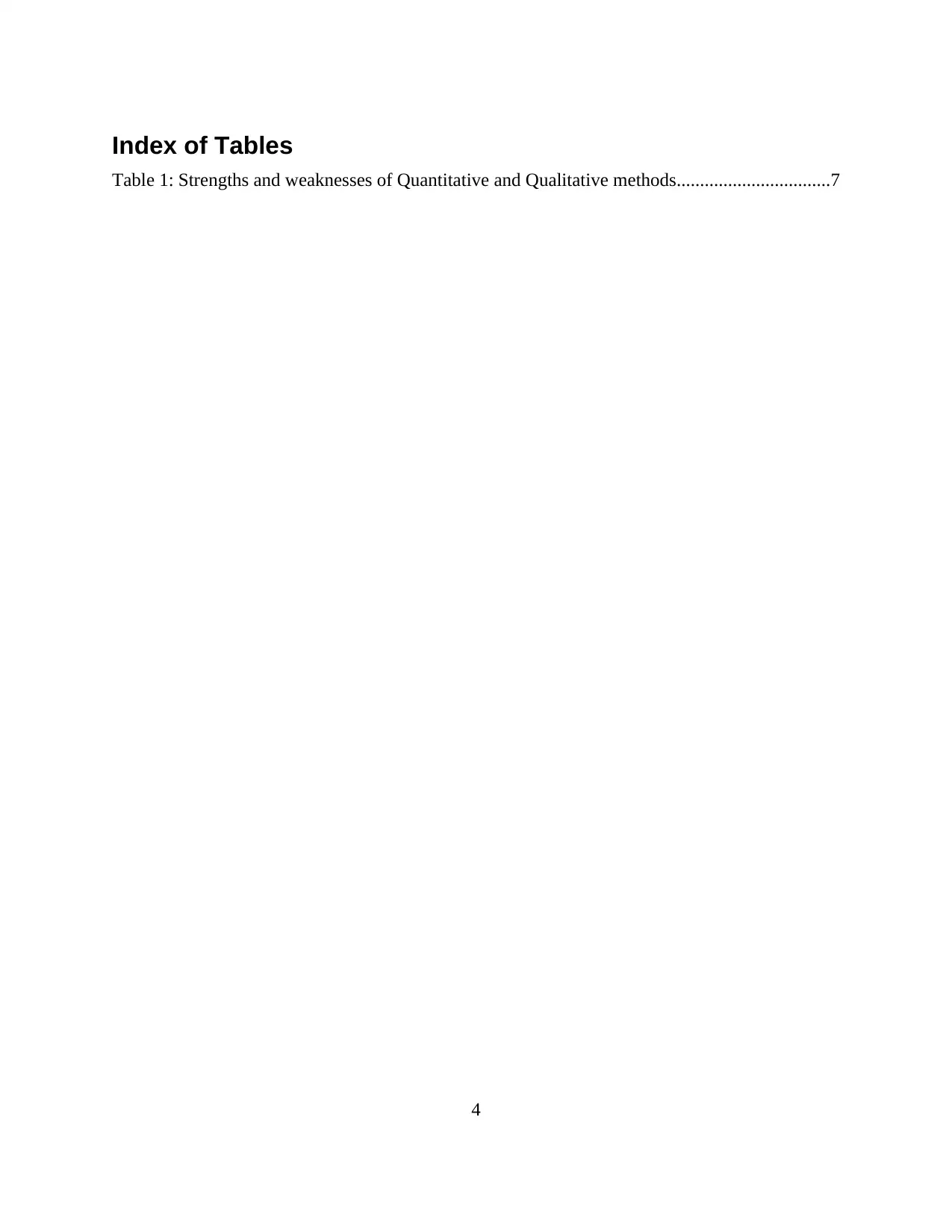
Index of Tables
Table 1: Strengths and weaknesses of Quantitative and Qualitative methods.................................7
4
Table 1: Strengths and weaknesses of Quantitative and Qualitative methods.................................7
4
Paraphrase This Document
Need a fresh take? Get an instant paraphrase of this document with our AI Paraphraser
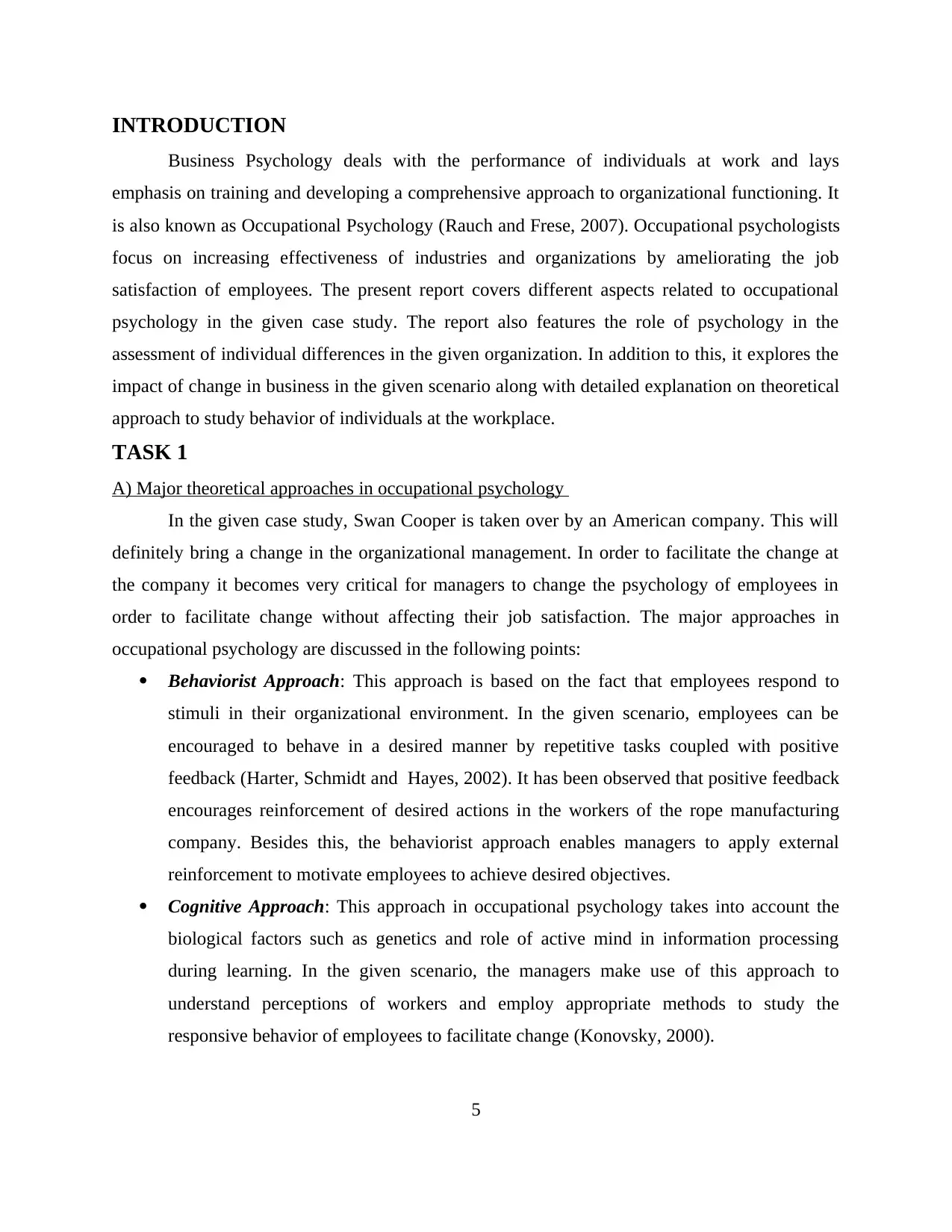
INTRODUCTION
Business Psychology deals with the performance of individuals at work and lays
emphasis on training and developing a comprehensive approach to organizational functioning. It
is also known as Occupational Psychology (Rauch and Frese, 2007). Occupational psychologists
focus on increasing effectiveness of industries and organizations by ameliorating the job
satisfaction of employees. The present report covers different aspects related to occupational
psychology in the given case study. The report also features the role of psychology in the
assessment of individual differences in the given organization. In addition to this, it explores the
impact of change in business in the given scenario along with detailed explanation on theoretical
approach to study behavior of individuals at the workplace.
TASK 1
A) Major theoretical approaches in occupational psychology
In the given case study, Swan Cooper is taken over by an American company. This will
definitely bring a change in the organizational management. In order to facilitate the change at
the company it becomes very critical for managers to change the psychology of employees in
order to facilitate change without affecting their job satisfaction. The major approaches in
occupational psychology are discussed in the following points:
Behaviorist Approach: This approach is based on the fact that employees respond to
stimuli in their organizational environment. In the given scenario, employees can be
encouraged to behave in a desired manner by repetitive tasks coupled with positive
feedback (Harter, Schmidt and Hayes, 2002). It has been observed that positive feedback
encourages reinforcement of desired actions in the workers of the rope manufacturing
company. Besides this, the behaviorist approach enables managers to apply external
reinforcement to motivate employees to achieve desired objectives.
Cognitive Approach: This approach in occupational psychology takes into account the
biological factors such as genetics and role of active mind in information processing
during learning. In the given scenario, the managers make use of this approach to
understand perceptions of workers and employ appropriate methods to study the
responsive behavior of employees to facilitate change (Konovsky, 2000).
5
Business Psychology deals with the performance of individuals at work and lays
emphasis on training and developing a comprehensive approach to organizational functioning. It
is also known as Occupational Psychology (Rauch and Frese, 2007). Occupational psychologists
focus on increasing effectiveness of industries and organizations by ameliorating the job
satisfaction of employees. The present report covers different aspects related to occupational
psychology in the given case study. The report also features the role of psychology in the
assessment of individual differences in the given organization. In addition to this, it explores the
impact of change in business in the given scenario along with detailed explanation on theoretical
approach to study behavior of individuals at the workplace.
TASK 1
A) Major theoretical approaches in occupational psychology
In the given case study, Swan Cooper is taken over by an American company. This will
definitely bring a change in the organizational management. In order to facilitate the change at
the company it becomes very critical for managers to change the psychology of employees in
order to facilitate change without affecting their job satisfaction. The major approaches in
occupational psychology are discussed in the following points:
Behaviorist Approach: This approach is based on the fact that employees respond to
stimuli in their organizational environment. In the given scenario, employees can be
encouraged to behave in a desired manner by repetitive tasks coupled with positive
feedback (Harter, Schmidt and Hayes, 2002). It has been observed that positive feedback
encourages reinforcement of desired actions in the workers of the rope manufacturing
company. Besides this, the behaviorist approach enables managers to apply external
reinforcement to motivate employees to achieve desired objectives.
Cognitive Approach: This approach in occupational psychology takes into account the
biological factors such as genetics and role of active mind in information processing
during learning. In the given scenario, the managers make use of this approach to
understand perceptions of workers and employ appropriate methods to study the
responsive behavior of employees to facilitate change (Konovsky, 2000).
5
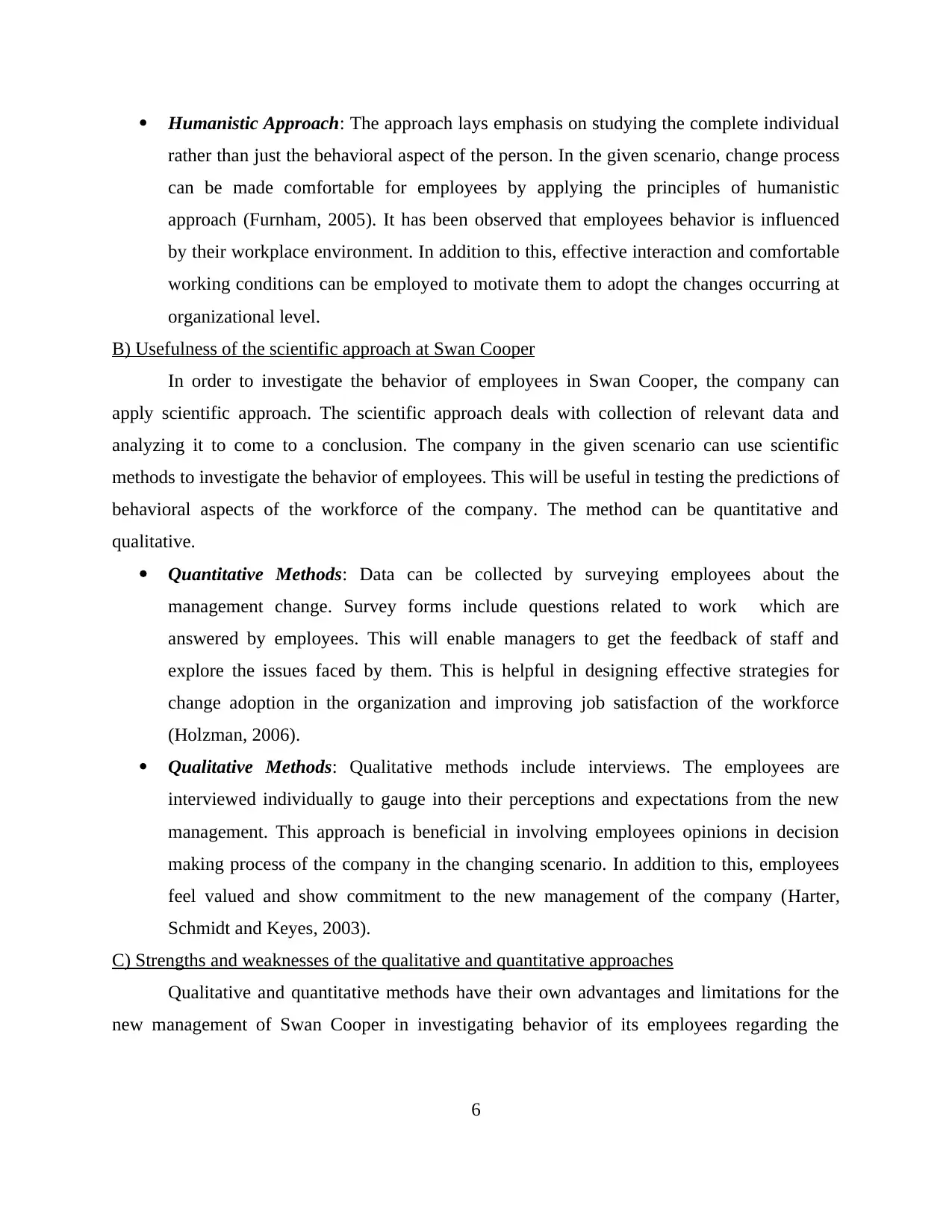
Humanistic Approach: The approach lays emphasis on studying the complete individual
rather than just the behavioral aspect of the person. In the given scenario, change process
can be made comfortable for employees by applying the principles of humanistic
approach (Furnham, 2005). It has been observed that employees behavior is influenced
by their workplace environment. In addition to this, effective interaction and comfortable
working conditions can be employed to motivate them to adopt the changes occurring at
organizational level.
B) Usefulness of the scientific approach at Swan Cooper
In order to investigate the behavior of employees in Swan Cooper, the company can
apply scientific approach. The scientific approach deals with collection of relevant data and
analyzing it to come to a conclusion. The company in the given scenario can use scientific
methods to investigate the behavior of employees. This will be useful in testing the predictions of
behavioral aspects of the workforce of the company. The method can be quantitative and
qualitative.
Quantitative Methods: Data can be collected by surveying employees about the
management change. Survey forms include questions related to work which are
answered by employees. This will enable managers to get the feedback of staff and
explore the issues faced by them. This is helpful in designing effective strategies for
change adoption in the organization and improving job satisfaction of the workforce
(Holzman, 2006).
Qualitative Methods: Qualitative methods include interviews. The employees are
interviewed individually to gauge into their perceptions and expectations from the new
management. This approach is beneficial in involving employees opinions in decision
making process of the company in the changing scenario. In addition to this, employees
feel valued and show commitment to the new management of the company (Harter,
Schmidt and Keyes, 2003).
C) Strengths and weaknesses of the qualitative and quantitative approaches
Qualitative and quantitative methods have their own advantages and limitations for the
new management of Swan Cooper in investigating behavior of its employees regarding the
6
rather than just the behavioral aspect of the person. In the given scenario, change process
can be made comfortable for employees by applying the principles of humanistic
approach (Furnham, 2005). It has been observed that employees behavior is influenced
by their workplace environment. In addition to this, effective interaction and comfortable
working conditions can be employed to motivate them to adopt the changes occurring at
organizational level.
B) Usefulness of the scientific approach at Swan Cooper
In order to investigate the behavior of employees in Swan Cooper, the company can
apply scientific approach. The scientific approach deals with collection of relevant data and
analyzing it to come to a conclusion. The company in the given scenario can use scientific
methods to investigate the behavior of employees. This will be useful in testing the predictions of
behavioral aspects of the workforce of the company. The method can be quantitative and
qualitative.
Quantitative Methods: Data can be collected by surveying employees about the
management change. Survey forms include questions related to work which are
answered by employees. This will enable managers to get the feedback of staff and
explore the issues faced by them. This is helpful in designing effective strategies for
change adoption in the organization and improving job satisfaction of the workforce
(Holzman, 2006).
Qualitative Methods: Qualitative methods include interviews. The employees are
interviewed individually to gauge into their perceptions and expectations from the new
management. This approach is beneficial in involving employees opinions in decision
making process of the company in the changing scenario. In addition to this, employees
feel valued and show commitment to the new management of the company (Harter,
Schmidt and Keyes, 2003).
C) Strengths and weaknesses of the qualitative and quantitative approaches
Qualitative and quantitative methods have their own advantages and limitations for the
new management of Swan Cooper in investigating behavior of its employees regarding the
6
⊘ This is a preview!⊘
Do you want full access?
Subscribe today to unlock all pages.

Trusted by 1+ million students worldwide
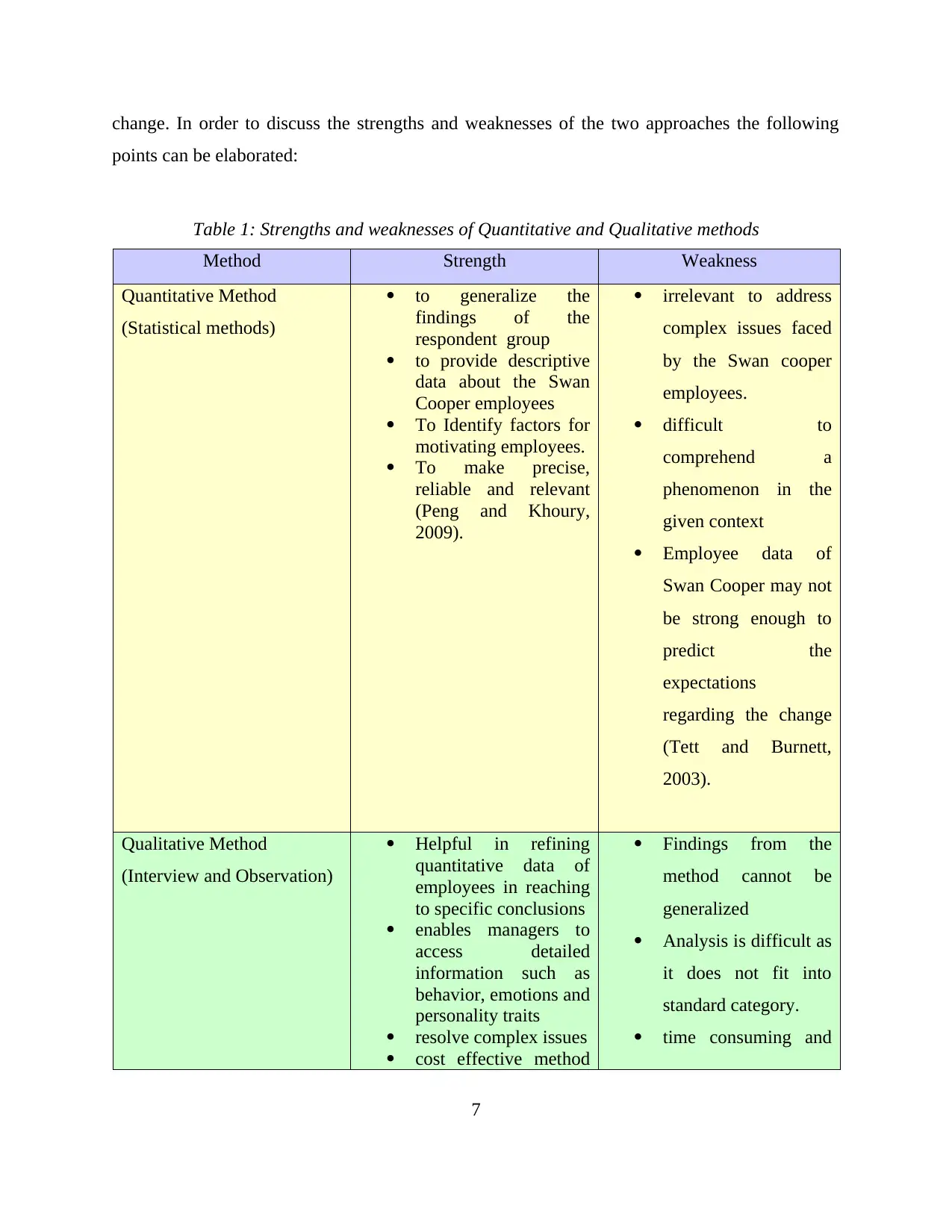
change. In order to discuss the strengths and weaknesses of the two approaches the following
points can be elaborated:
Table 1: Strengths and weaknesses of Quantitative and Qualitative methods
Method Strength Weakness
Quantitative Method
(Statistical methods)
to generalize the
findings of the
respondent group
to provide descriptive
data about the Swan
Cooper employees
To Identify factors for
motivating employees.
To make precise,
reliable and relevant
(Peng and Khoury,
2009).
irrelevant to address
complex issues faced
by the Swan cooper
employees.
difficult to
comprehend a
phenomenon in the
given context
Employee data of
Swan Cooper may not
be strong enough to
predict the
expectations
regarding the change
(Tett and Burnett,
2003).
Qualitative Method
(Interview and Observation)
Helpful in refining
quantitative data of
employees in reaching
to specific conclusions
enables managers to
access detailed
information such as
behavior, emotions and
personality traits
resolve complex issues
cost effective method
Findings from the
method cannot be
generalized
Analysis is difficult as
it does not fit into
standard category.
time consuming and
7
points can be elaborated:
Table 1: Strengths and weaknesses of Quantitative and Qualitative methods
Method Strength Weakness
Quantitative Method
(Statistical methods)
to generalize the
findings of the
respondent group
to provide descriptive
data about the Swan
Cooper employees
To Identify factors for
motivating employees.
To make precise,
reliable and relevant
(Peng and Khoury,
2009).
irrelevant to address
complex issues faced
by the Swan cooper
employees.
difficult to
comprehend a
phenomenon in the
given context
Employee data of
Swan Cooper may not
be strong enough to
predict the
expectations
regarding the change
(Tett and Burnett,
2003).
Qualitative Method
(Interview and Observation)
Helpful in refining
quantitative data of
employees in reaching
to specific conclusions
enables managers to
access detailed
information such as
behavior, emotions and
personality traits
resolve complex issues
cost effective method
Findings from the
method cannot be
generalized
Analysis is difficult as
it does not fit into
standard category.
time consuming and
7
Paraphrase This Document
Need a fresh take? Get an instant paraphrase of this document with our AI Paraphraser
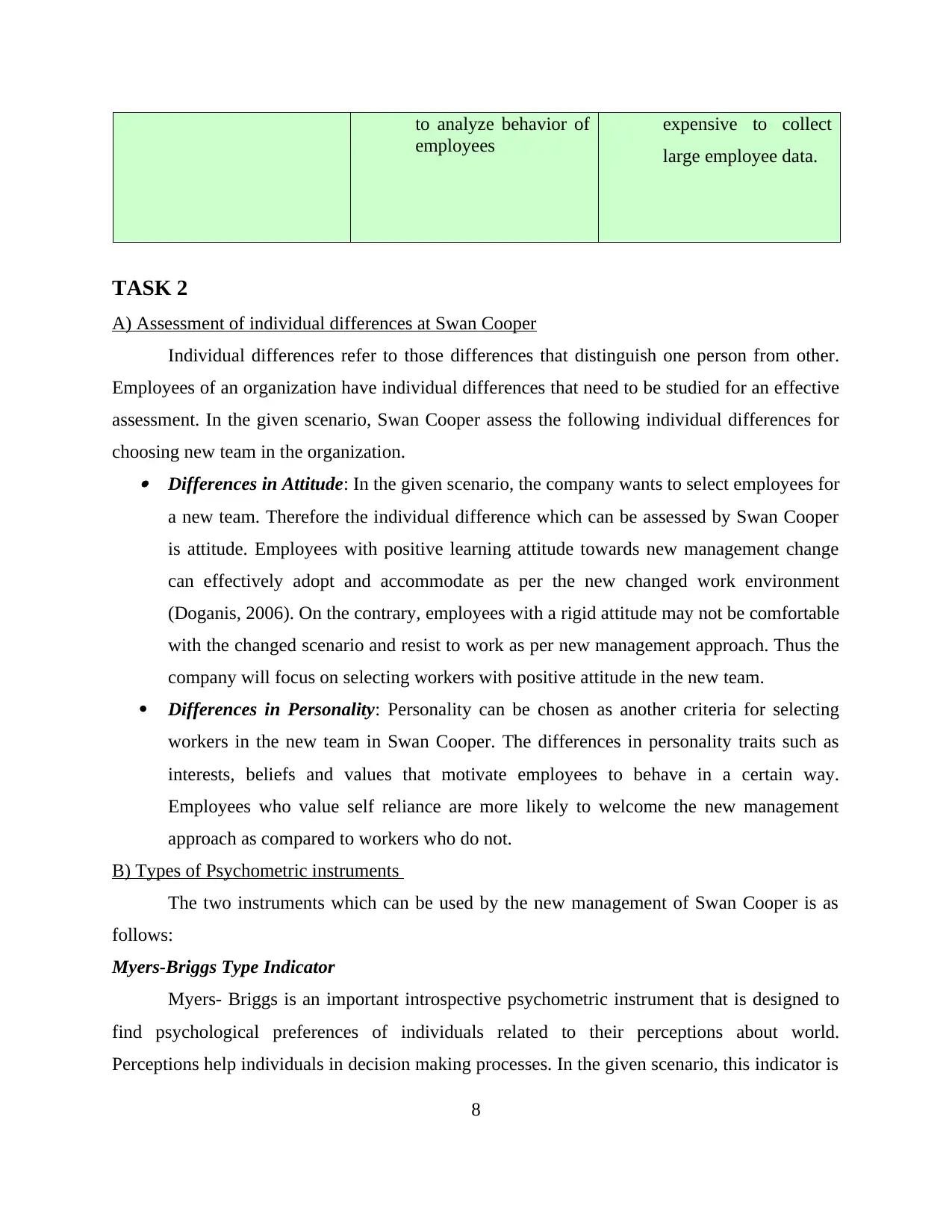
to analyze behavior of
employees
expensive to collect
large employee data.
TASK 2
A) Assessment of individual differences at Swan Cooper
Individual differences refer to those differences that distinguish one person from other.
Employees of an organization have individual differences that need to be studied for an effective
assessment. In the given scenario, Swan Cooper assess the following individual differences for
choosing new team in the organization. Differences in Attitude: In the given scenario, the company wants to select employees for
a new team. Therefore the individual difference which can be assessed by Swan Cooper
is attitude. Employees with positive learning attitude towards new management change
can effectively adopt and accommodate as per the new changed work environment
(Doganis, 2006). On the contrary, employees with a rigid attitude may not be comfortable
with the changed scenario and resist to work as per new management approach. Thus the
company will focus on selecting workers with positive attitude in the new team.
Differences in Personality: Personality can be chosen as another criteria for selecting
workers in the new team in Swan Cooper. The differences in personality traits such as
interests, beliefs and values that motivate employees to behave in a certain way.
Employees who value self reliance are more likely to welcome the new management
approach as compared to workers who do not.
B) Types of Psychometric instruments
The two instruments which can be used by the new management of Swan Cooper is as
follows:
Myers-Briggs Type Indicator
Myers- Briggs is an important introspective psychometric instrument that is designed to
find psychological preferences of individuals related to their perceptions about world.
Perceptions help individuals in decision making processes. In the given scenario, this indicator is
8
employees
expensive to collect
large employee data.
TASK 2
A) Assessment of individual differences at Swan Cooper
Individual differences refer to those differences that distinguish one person from other.
Employees of an organization have individual differences that need to be studied for an effective
assessment. In the given scenario, Swan Cooper assess the following individual differences for
choosing new team in the organization. Differences in Attitude: In the given scenario, the company wants to select employees for
a new team. Therefore the individual difference which can be assessed by Swan Cooper
is attitude. Employees with positive learning attitude towards new management change
can effectively adopt and accommodate as per the new changed work environment
(Doganis, 2006). On the contrary, employees with a rigid attitude may not be comfortable
with the changed scenario and resist to work as per new management approach. Thus the
company will focus on selecting workers with positive attitude in the new team.
Differences in Personality: Personality can be chosen as another criteria for selecting
workers in the new team in Swan Cooper. The differences in personality traits such as
interests, beliefs and values that motivate employees to behave in a certain way.
Employees who value self reliance are more likely to welcome the new management
approach as compared to workers who do not.
B) Types of Psychometric instruments
The two instruments which can be used by the new management of Swan Cooper is as
follows:
Myers-Briggs Type Indicator
Myers- Briggs is an important introspective psychometric instrument that is designed to
find psychological preferences of individuals related to their perceptions about world.
Perceptions help individuals in decision making processes. In the given scenario, this indicator is
8
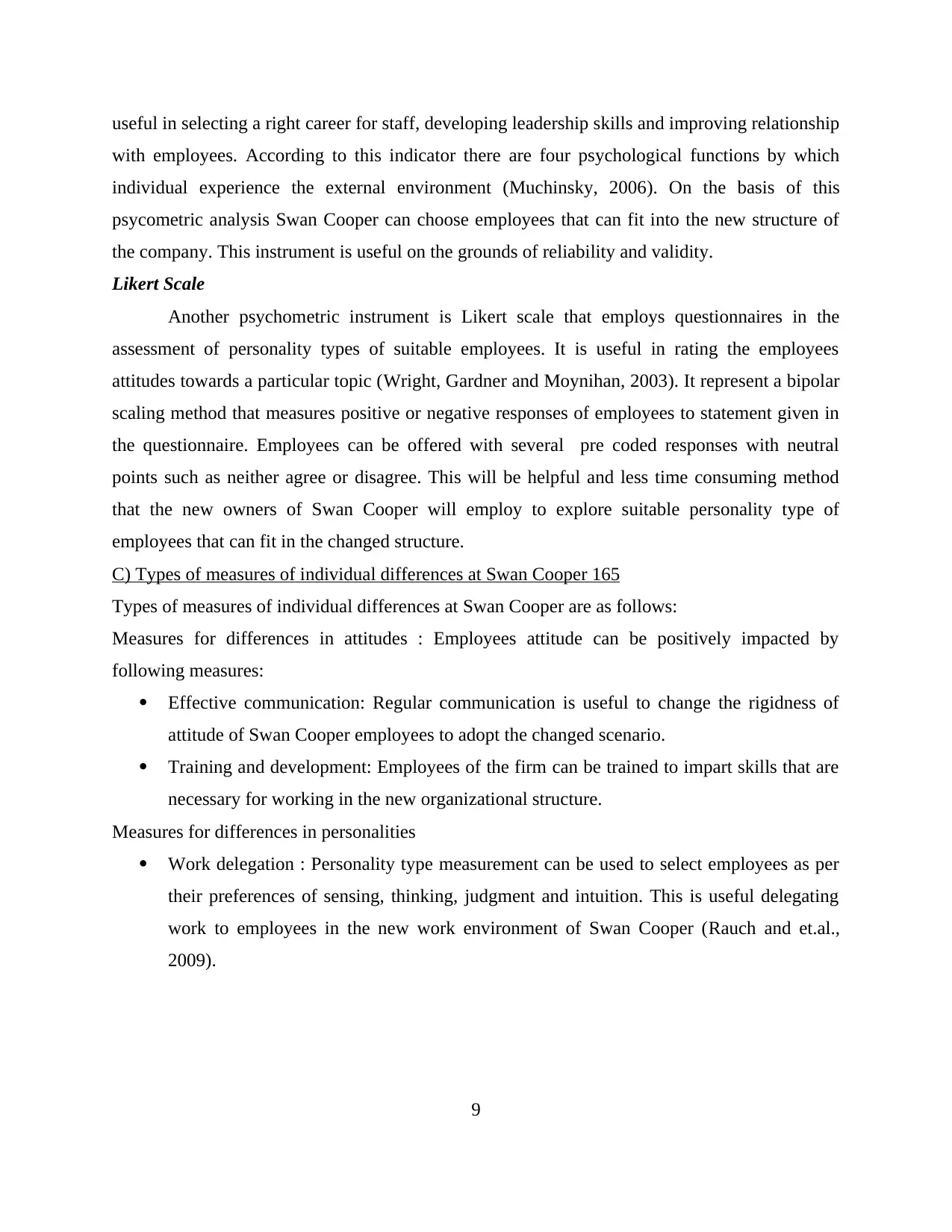
useful in selecting a right career for staff, developing leadership skills and improving relationship
with employees. According to this indicator there are four psychological functions by which
individual experience the external environment (Muchinsky, 2006). On the basis of this
psycometric analysis Swan Cooper can choose employees that can fit into the new structure of
the company. This instrument is useful on the grounds of reliability and validity.
Likert Scale
Another psychometric instrument is Likert scale that employs questionnaires in the
assessment of personality types of suitable employees. It is useful in rating the employees
attitudes towards a particular topic (Wright, Gardner and Moynihan, 2003). It represent a bipolar
scaling method that measures positive or negative responses of employees to statement given in
the questionnaire. Employees can be offered with several pre coded responses with neutral
points such as neither agree or disagree. This will be helpful and less time consuming method
that the new owners of Swan Cooper will employ to explore suitable personality type of
employees that can fit in the changed structure.
C) Types of measures of individual differences at Swan Cooper 165
Types of measures of individual differences at Swan Cooper are as follows:
Measures for differences in attitudes : Employees attitude can be positively impacted by
following measures:
Effective communication: Regular communication is useful to change the rigidness of
attitude of Swan Cooper employees to adopt the changed scenario.
Training and development: Employees of the firm can be trained to impart skills that are
necessary for working in the new organizational structure.
Measures for differences in personalities
Work delegation : Personality type measurement can be used to select employees as per
their preferences of sensing, thinking, judgment and intuition. This is useful delegating
work to employees in the new work environment of Swan Cooper (Rauch and et.al.,
2009).
9
with employees. According to this indicator there are four psychological functions by which
individual experience the external environment (Muchinsky, 2006). On the basis of this
psycometric analysis Swan Cooper can choose employees that can fit into the new structure of
the company. This instrument is useful on the grounds of reliability and validity.
Likert Scale
Another psychometric instrument is Likert scale that employs questionnaires in the
assessment of personality types of suitable employees. It is useful in rating the employees
attitudes towards a particular topic (Wright, Gardner and Moynihan, 2003). It represent a bipolar
scaling method that measures positive or negative responses of employees to statement given in
the questionnaire. Employees can be offered with several pre coded responses with neutral
points such as neither agree or disagree. This will be helpful and less time consuming method
that the new owners of Swan Cooper will employ to explore suitable personality type of
employees that can fit in the changed structure.
C) Types of measures of individual differences at Swan Cooper 165
Types of measures of individual differences at Swan Cooper are as follows:
Measures for differences in attitudes : Employees attitude can be positively impacted by
following measures:
Effective communication: Regular communication is useful to change the rigidness of
attitude of Swan Cooper employees to adopt the changed scenario.
Training and development: Employees of the firm can be trained to impart skills that are
necessary for working in the new organizational structure.
Measures for differences in personalities
Work delegation : Personality type measurement can be used to select employees as per
their preferences of sensing, thinking, judgment and intuition. This is useful delegating
work to employees in the new work environment of Swan Cooper (Rauch and et.al.,
2009).
9
⊘ This is a preview!⊘
Do you want full access?
Subscribe today to unlock all pages.

Trusted by 1+ million students worldwide

TASK 3
A) Studying workforce reaction to change at Swan Cooper
Swan Cooper employees reaction to change can be explained by using the following model:
1) Kubler-Ross Model
The model explains the series of emotional stages experienced by Swan Cooper
employees due to negative incidences such as loss of job or income, death of loved ones, etc.
These stages are
1. Denial: It is refusal to accept reality, information and fact associated with the situation.
Employees of Swan Cooper can refuse to accept the management change of the company.
2. Anger: At this stage employees of Swan Cooper who deal with emotional upset tend to
show anger to themselves or to the people close to them (Kübler-Ross model, 2011).
10
Ill
ustration 1: Kubler Ross Model
(Source: Kübler-Ross model, 2011)
A) Studying workforce reaction to change at Swan Cooper
Swan Cooper employees reaction to change can be explained by using the following model:
1) Kubler-Ross Model
The model explains the series of emotional stages experienced by Swan Cooper
employees due to negative incidences such as loss of job or income, death of loved ones, etc.
These stages are
1. Denial: It is refusal to accept reality, information and fact associated with the situation.
Employees of Swan Cooper can refuse to accept the management change of the company.
2. Anger: At this stage employees of Swan Cooper who deal with emotional upset tend to
show anger to themselves or to the people close to them (Kübler-Ross model, 2011).
10
Ill
ustration 1: Kubler Ross Model
(Source: Kübler-Ross model, 2011)
Paraphrase This Document
Need a fresh take? Get an instant paraphrase of this document with our AI Paraphraser
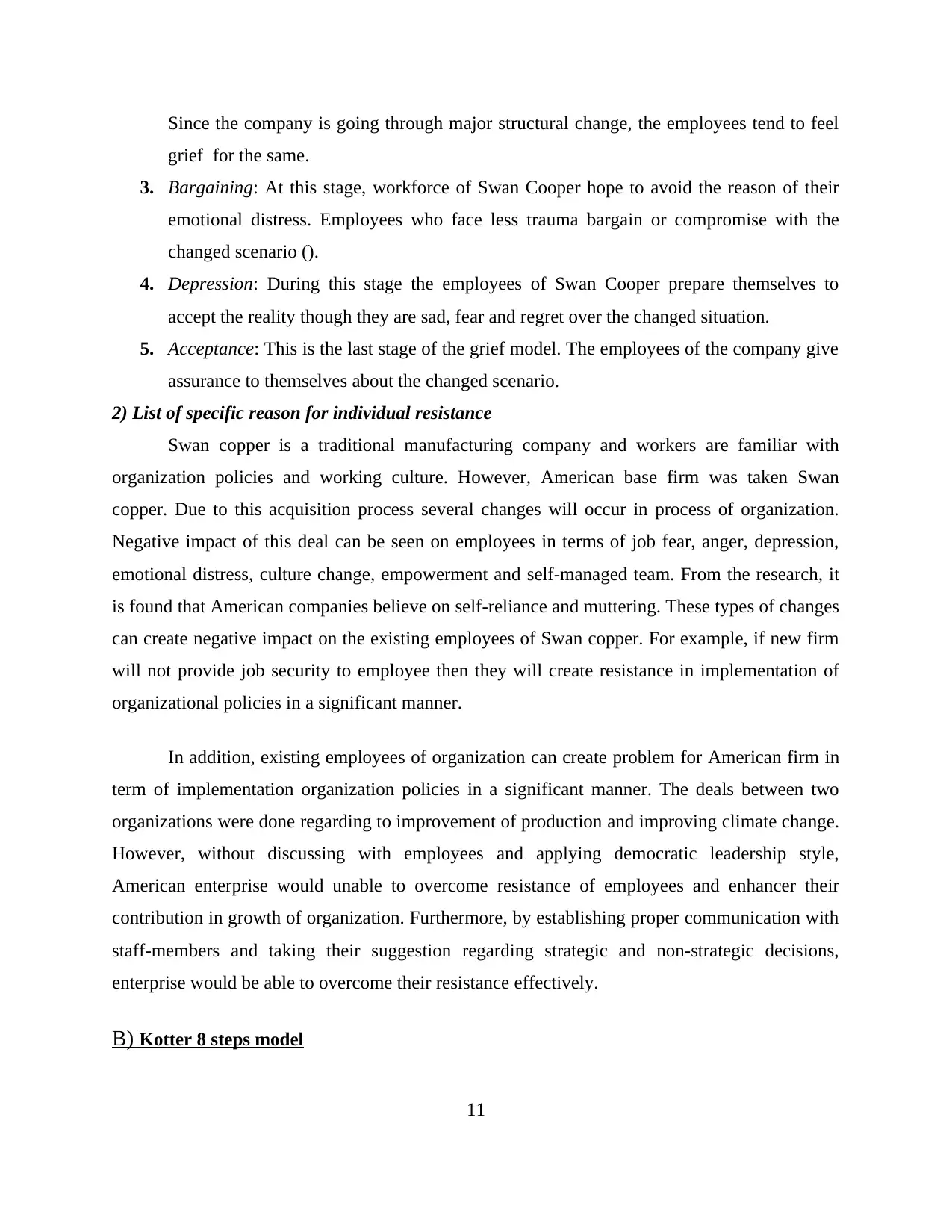
Since the company is going through major structural change, the employees tend to feel
grief for the same.
3. Bargaining: At this stage, workforce of Swan Cooper hope to avoid the reason of their
emotional distress. Employees who face less trauma bargain or compromise with the
changed scenario ().
4. Depression: During this stage the employees of Swan Cooper prepare themselves to
accept the reality though they are sad, fear and regret over the changed situation.
5. Acceptance: This is the last stage of the grief model. The employees of the company give
assurance to themselves about the changed scenario.
2) List of specific reason for individual resistance
Swan copper is a traditional manufacturing company and workers are familiar with
organization policies and working culture. However, American base firm was taken Swan
copper. Due to this acquisition process several changes will occur in process of organization.
Negative impact of this deal can be seen on employees in terms of job fear, anger, depression,
emotional distress, culture change, empowerment and self-managed team. From the research, it
is found that American companies believe on self-reliance and muttering. These types of changes
can create negative impact on the existing employees of Swan copper. For example, if new firm
will not provide job security to employee then they will create resistance in implementation of
organizational policies in a significant manner.
In addition, existing employees of organization can create problem for American firm in
term of implementation organization policies in a significant manner. The deals between two
organizations were done regarding to improvement of production and improving climate change.
However, without discussing with employees and applying democratic leadership style,
American enterprise would unable to overcome resistance of employees and enhancer their
contribution in growth of organization. Furthermore, by establishing proper communication with
staff-members and taking their suggestion regarding strategic and non-strategic decisions,
enterprise would be able to overcome their resistance effectively.
B) Kotter 8 steps model
11
grief for the same.
3. Bargaining: At this stage, workforce of Swan Cooper hope to avoid the reason of their
emotional distress. Employees who face less trauma bargain or compromise with the
changed scenario ().
4. Depression: During this stage the employees of Swan Cooper prepare themselves to
accept the reality though they are sad, fear and regret over the changed situation.
5. Acceptance: This is the last stage of the grief model. The employees of the company give
assurance to themselves about the changed scenario.
2) List of specific reason for individual resistance
Swan copper is a traditional manufacturing company and workers are familiar with
organization policies and working culture. However, American base firm was taken Swan
copper. Due to this acquisition process several changes will occur in process of organization.
Negative impact of this deal can be seen on employees in terms of job fear, anger, depression,
emotional distress, culture change, empowerment and self-managed team. From the research, it
is found that American companies believe on self-reliance and muttering. These types of changes
can create negative impact on the existing employees of Swan copper. For example, if new firm
will not provide job security to employee then they will create resistance in implementation of
organizational policies in a significant manner.
In addition, existing employees of organization can create problem for American firm in
term of implementation organization policies in a significant manner. The deals between two
organizations were done regarding to improvement of production and improving climate change.
However, without discussing with employees and applying democratic leadership style,
American enterprise would unable to overcome resistance of employees and enhancer their
contribution in growth of organization. Furthermore, by establishing proper communication with
staff-members and taking their suggestion regarding strategic and non-strategic decisions,
enterprise would be able to overcome their resistance effectively.
B) Kotter 8 steps model
11
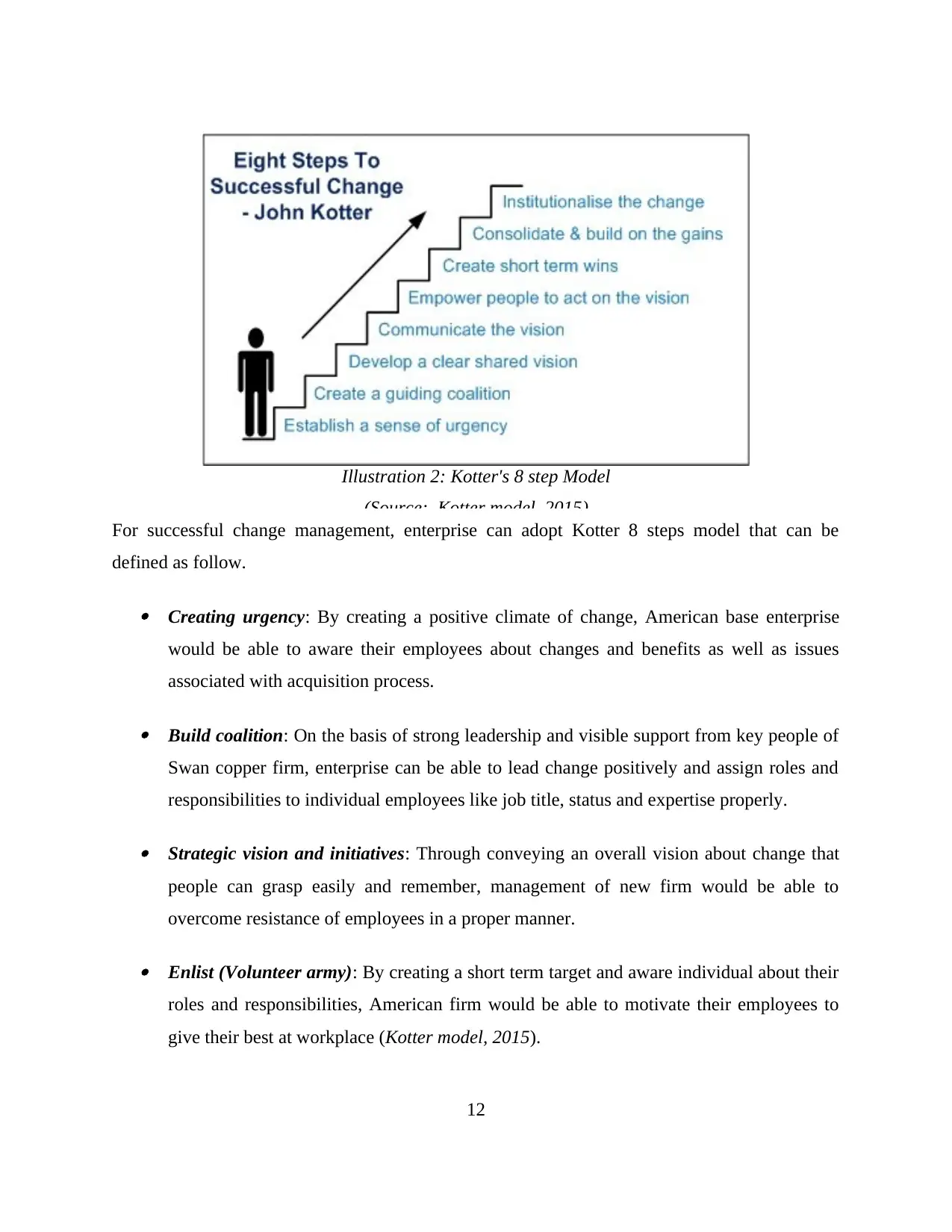
For successful change management, enterprise can adopt Kotter 8 steps model that can be
defined as follow.
Creating urgency: By creating a positive climate of change, American base enterprise
would be able to aware their employees about changes and benefits as well as issues
associated with acquisition process.
Build coalition: On the basis of strong leadership and visible support from key people of
Swan copper firm, enterprise can be able to lead change positively and assign roles and
responsibilities to individual employees like job title, status and expertise properly.
Strategic vision and initiatives: Through conveying an overall vision about change that
people can grasp easily and remember, management of new firm would be able to
overcome resistance of employees in a proper manner.
Enlist (Volunteer army): By creating a short term target and aware individual about their
roles and responsibilities, American firm would be able to motivate their employees to
give their best at workplace (Kotter model, 2015).
12
Illustration 2: Kotter's 8 step Model
(Source: Kotter model, 2015)
defined as follow.
Creating urgency: By creating a positive climate of change, American base enterprise
would be able to aware their employees about changes and benefits as well as issues
associated with acquisition process.
Build coalition: On the basis of strong leadership and visible support from key people of
Swan copper firm, enterprise can be able to lead change positively and assign roles and
responsibilities to individual employees like job title, status and expertise properly.
Strategic vision and initiatives: Through conveying an overall vision about change that
people can grasp easily and remember, management of new firm would be able to
overcome resistance of employees in a proper manner.
Enlist (Volunteer army): By creating a short term target and aware individual about their
roles and responsibilities, American firm would be able to motivate their employees to
give their best at workplace (Kotter model, 2015).
12
Illustration 2: Kotter's 8 step Model
(Source: Kotter model, 2015)
⊘ This is a preview!⊘
Do you want full access?
Subscribe today to unlock all pages.

Trusted by 1+ million students worldwide
1 out of 16
Your All-in-One AI-Powered Toolkit for Academic Success.
+13062052269
info@desklib.com
Available 24*7 on WhatsApp / Email
![[object Object]](/_next/static/media/star-bottom.7253800d.svg)
Unlock your academic potential
Copyright © 2020–2026 A2Z Services. All Rights Reserved. Developed and managed by ZUCOL.
